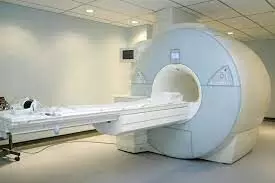3D MRI sequences useful for better evaluation of recess stenoses of spine: study

Since the 2010s, the isotropic submillimeter 3D sequences have become steadily more available with different MRI devices – these thin-slice sequences offer superior resolution as compared to the conventional thick-slice (roughly 3–4 mm) MRI sequences. However, the adoption of the 3D sequences to the everyday clinical setup has been rather slow, and conventional thick-slice protocols are still widely in use.
Nevalainen et al conducted a systematic literature review on the diagnostic utility of 3D MRI sequences in the assessment of central canal, recess and foraminal stenosis in the spine.
The databases PubMed, MEDLINE (via OVID) and The Cochrane Central Register of Controlled Trials, were searched for studies that investigated the diagnostic use of 3D MRI to evaluate stenoses in various parts of the spine in humans. Three reviewers examined the literature and conducted systematic review according to PRISMA guidelines.
Key findings of the study were:
• Thirty studies were retrieved from 2595 publications for this systematic review.
• The overall diagnostic performance of 3D MRI outperformed the conventional 2D MRI with reported sensitivities ranging from 79 to 100% and specificities ranging from 86 to 100% regarding the evaluation of central, recess and foraminal stenoses.
• In general, high level of agreement (both intra- and inter rater) regarding visibility and pathology on 3D sequences was reported.
• Studies show that well optimized 3D sequences allow the use of higher spatial resolution, similar scan time and increased SNR and CNR when compared to corresponding 2D sequences. However, the benefit of 3D sequences is in the additional information provided by them and in the possibility to save total protocol scan times.
The authors commented – “Strengths of this review include the rigorous assessment of the literature by three academic medical experts: a neuroradiologist, a musculoskeletal radiologist and a medical physicist. Moreover, we applied the PRISMA recommendations for meticulous reporting of our findings. One limitation is that relevant articles might not have been included due to the limited number of databases used in the search or limitations in the search and screening strategy. The most obvious weakness within this systematic review is vast heterogeneity of the included studies, most importantly the lack of surgical gold standard is worrisome. Accordingly, there was no possibility of meta-analysis. Moreover, the fact that no studies on thoracic spine existed in the literature remains as minor weakness.”
The authors concluded – “In conclusion, the literature of the 3D MRI assessment of spinal stenoses is largely heterogeneous with varying MRI protocols and diagnostic results. Generally, 3D sequences offer similar or superior detection of stenoses with high reliability explained by the better visualization of anatomic structures. Ultimately, the benefit of 3D MRI seems to be the better evaluation of recess stenoses which supports the clinical implementation of these sequences into everyday workflow.”
Further reading:
Diagnostic utility of 3D MRI sequences in the assessment of central, recess and foraminal stenoses of the spine: a systematic review
Mika T. Nevalainen et al
Skeletal Radiology
https://doi.org/10.1007/s00256-024-04689-1



